The first AA badges were used for practical purposes. In 1905 our bicycle scouts were issued with a simple metal badge carrying the AA sign and their individual scout number, as a means of identification for all passing drivers.
And of course, distinctive badges were provided to AA member drivers from 1906, who would proudly display them on their vehicles.
Read on for a brief history of the AA badge.
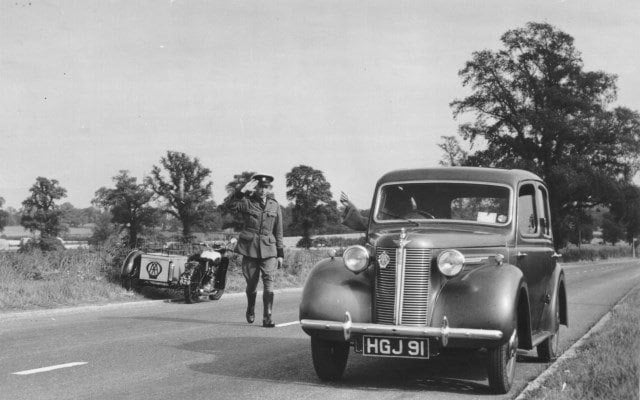
1948, Epping Forest, a patrol salutes an AA member. Look for the new style badge on the car grill, introduced in 1945.
Badge numbering system(The number was not the membership number.)
|
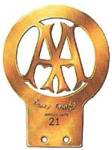 |
|
Precise details of the earliest AA car badges have not survived. We know that they were issued in April 1906, and were of a uniform pattern. It is likely that the first two or three hundred were made only in brass. |
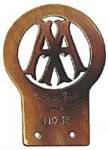 |
| In November 1907 a smaller version of the AA badge was made for motorcycles. During the First World War, motorcycle badges were given coloured heart-shape tokens indicating membership expiry dates. |
 |
| Motor Union car badge first issued in 1907 (originally without wings). |
 |
| After amalgamation with the Motor Union, a combined badge was designed in 1911 incorporating the M and wings from the body's emblem with the intertwined AA. It was the standard pattern for the next half century, varying only in size, type of metal and method of fixing. From about 1925 onwards brass badges gave way almost entirely to nickel or chromium finish. During the 1930s the wings were made straighter and pinions were given greater definition. |
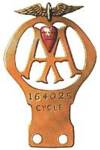 |
| A combined AA and MU motorcycle badge with a subscription renewal 'token', 1915 to 1916 only. |
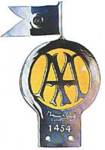 |
| From 1907 to 1967 members of the AA Committee displayed the original circular badge surmounted by a pennant. |
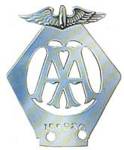 |
| The short-lived pentagonal light car badge, for two- or three-seater cars up to 11.9 horsepower, 1914 to 1920. |
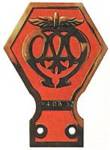 |
| Industrial or commercial vehicle section badge, brass with red background, 1911 to around 1930. |
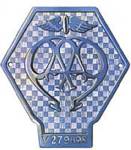 |
| Industrial or commercial vehicle section badge, around 1930 to 1967. It was made in chrome with an attractive basket-weave design. |
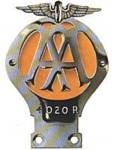 |
| Chromium motor cycle badge, first issued in 1929 and replaced around 1952. |
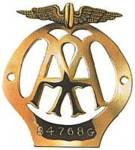 |
| Small car radiator badge, from 1930 to 1939. |
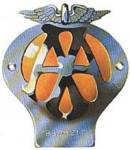 |
| In 1945 the shape was made more compact with a convex dome, and this design lasted until 1967. |
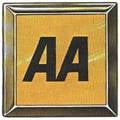 |
| The dome badge was replaced in 1967 with a large chrome and yellow rectangular plaque, which is still in use today. |
